The foundation of any building is the foundation, but erecting walls directly on the foundation is impossible, since they need protection from the destructive effects of moisture and temperature changes environment. The role of this protection is successfully performed by the plinth, arranged on a foundation with outside walls Another important function performed by the base is to ensure the necessary heat exchange.
Possibility to build ground floor made of brick will require builders to create high-quality ventilation, waterproofing and insulation. In this version, the base is the wall of an additional room in which no less comfortable conditions should be created.
Features of a basement built of brick
Laying the plinth in compliance with certain norms and rules is of great importance for the subsequent long-term operation of the building, therefore, when choosing the material from which it will be made, it is important to take into account moisture resistance and resistance to other negative impacts. Brick is not one of the most resistant materials, and this quality is associated with a particularly careful and attentive choice of brand plinth brick. It is equally important to comply with all masonry rules, taking into account the slightest nuances.
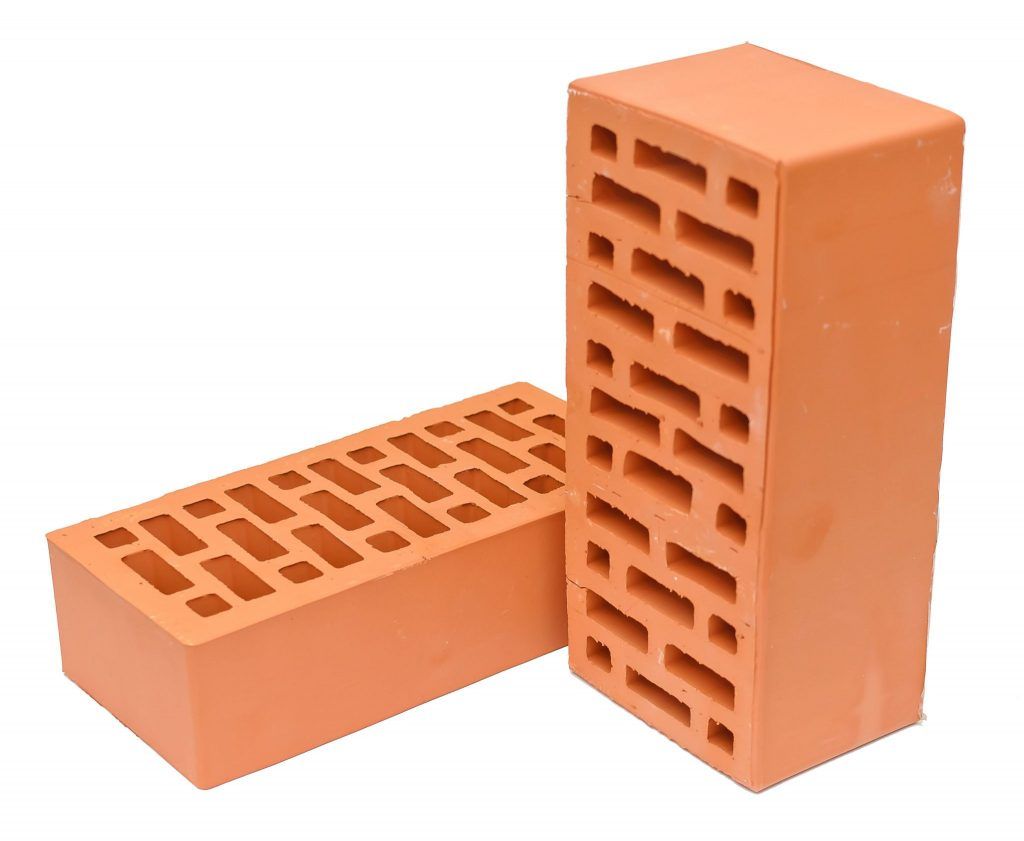 Despite certain disadvantages, the positive qualities of brick can be considered that it:
Despite certain disadvantages, the positive qualities of brick can be considered that it:
- easy to use;
- does not require additional finishing;
- has excellent thermal conductivity;
- is one of the available building materials.
Laying work brick plinth for a private home begins with the preparation of the project. It is created taking into account the characteristics of the soil, climatic conditions, and the method of pouring the foundation. The base is an intermediate structure between the foundation and the walls of the house; it is responsible for the absence of mold and mildew, rot and premature destruction of the entire structure.
Another advantage is the opportunity to get additional space when constructing a basement floor.
There may be a basement, boiler room or boiler room here, and some owners of private houses use this floor to get a special recreation room by placing a billiards or tennis table in it.
Brick base, ground floor for country house built in accordance with the requirements technological process and after the decision has been made what exactly it will be:
- Recessed, when the walls of the house protrude slightly above the base itself. If the house has such a floor, then the building receives additional protection from precipitation, and the structure itself is considered more durable and reliable. This type of base can withstand high level wall pressure.
- Brickwork is made flush with the wall of the house, building a basement or just a basement, making its walls the same thickness as those of the building.
- It can be protruding when the building has rather narrow walls, but with such a design this floor must be provided with protection from precipitation and mandatory drainage of water.
This decision is directly related to the work on waterproofing and insulation.
The procedure for constructing a brick plinth
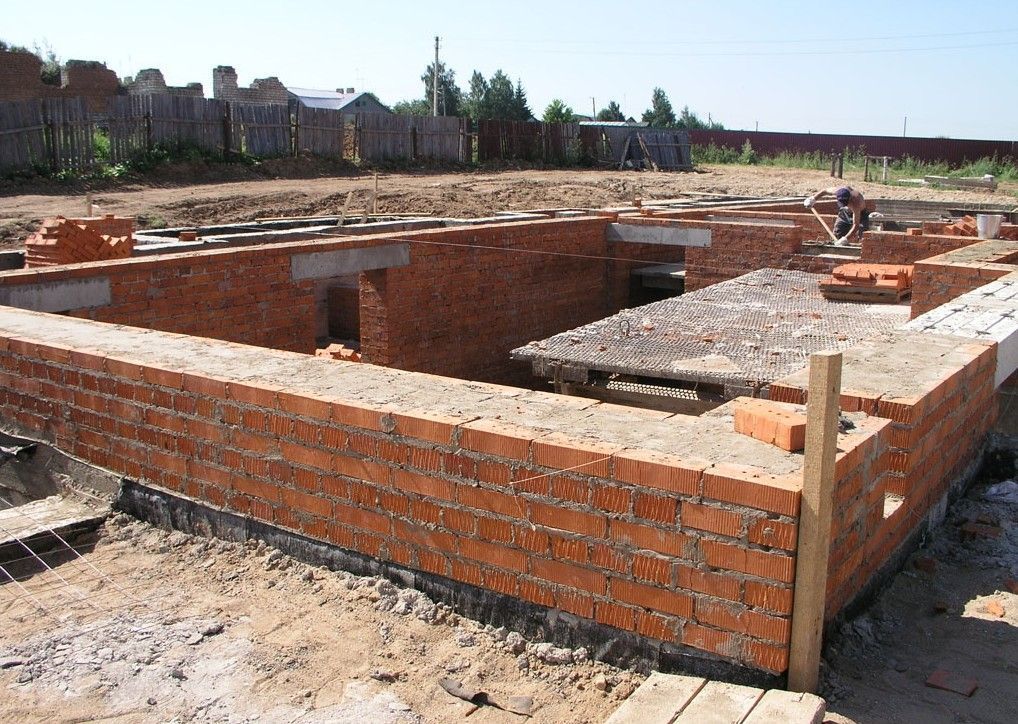 Laying a brick plinth
Laying a brick plinth The most crucial moment at the beginning of construction is the construction of corners. At this stage, constant monitoring of the level is necessary, since further leveling when the brick moves will be impossible.
In order to confirm correct installation, it is important to accurately measure both diagonals. The first row is laid out across the entire width of the structure.
For masonry you will need a solution consisting of cement, sand and water in a ratio of 1:3:3. In some cases, a special soap composition is used as a plasticizer, adding it to the cement-sand mixture. When raising the basement floor, you must immediately ensure that there is high-quality ventilation around the entire perimeter of the house. Ventilation vents are located at a height of at least 15 centimeters from the ground with a distance between them of no more than three meters. Their diameter should be 25-35 centimeters.
Having made sure that the angles are equal to 900, and the dimensions of the diagonals, lengths and widths are the same, you can begin laying, taking into account that the width of the base is 1.5 bricks. If during the construction of the basement of the house only brickwork is carried out, then its width should be at least 50 centimeters. This value can only be lower in cases where foam insulation is planned. In this case, the width of the base can be 38 centimeters. The height depends on whether the house has a basement. If its presence is provided, then this value is assigned from 70 to 100 centimeters; if such a floor is not provided, then it will be 40 centimeters.
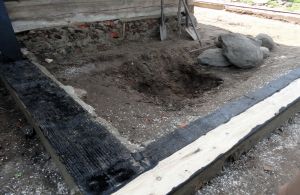
Waterproofing is laid directly on the foundation using roll materials. If two layers of roofing felt are laid, they must be glued together.
The basement, built of brick, is insulated at the request of the owner from the inside of the building, and when performing such work from the outside, you will need mastic, which can be applied either using spraying machines, or with a roller or brush.
The masonry is carried out under constant control using a level and strings, otherwise the wall of the house will be blocked and the erected structure will have to be dismantled.
You cannot hope to correct inaccuracies by changing the thickness of the mortar layer between rows of bricks.
Insulation and waterproofing of brick basement
A brick base is an intermediate structure, and is characterized by significant heat loss and a high level of humidity. By providing high-quality insulation and effective waterproofing, you can avoid rapid cooling and destruction of the walls of the house, the appearance of mold or mildew. In the video you will see how to properly waterproof a basement.
An important condition when working on waterproofing is its installation below floor level. The material for waterproofing a brick plinth is most often roofing felt or other rolled materials. Today their range is quite wide and varied, which makes it possible to satisfy any needs and requests of owners of houses under construction.
Foam plastic, penoplex or polyurethane foam are usually used as insulation for brick structures. But mastic is also very popular, as it effectively closes existing cracks, allowing you to retain heat in the house. Mastic also serves as a good waterproofing agent. The construction of a brick plinth requires attention and responsibility, since the strength and reliability of the entire building depends on the quality of the work performed.
Finishing the base is the final stage facade works. Since the material for constructing the base is most often concrete, you cannot do without additional cladding.
With its help, the initially nondescript part of the building joins the overall design line and acquires a brighter and more complete look. Despite the relatively small area, the design style of the basement has a strong influence on the design of the building as a whole.
Another cosmetic procedure has many variations through which the desired effect is achieved. You can create imitation masonry from ashlar or facing bricks, decorative masonry or a profiled geometric structure. Depending on the chosen technology and type of material, not only the visual impression changes, but also some technical characteristics.
This article will discuss in detail the main options for finishing the base. brick house. With its help, you can fully evaluate the advantages and disadvantages of each technology and choose the most suitable option for your circumstances. This instruction will be especially useful for those who decide to do the finishing themselves.
Finish options
Plaster
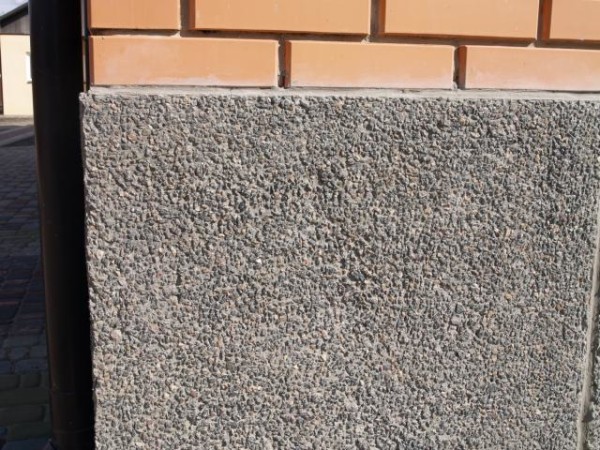
The most traditional material for decorating the basement of a building is cement plaster - this is one of the first technologies that began to be used for this purpose. The main ingredients of the mixture are cement and sand, thanks to which the plaster acquires its most characteristic properties - strength and chemical inertness.
Note!
Modern compositions can contain in their structure various dyes, polymer and abrasive additives, thanks to which the finished surface acquires decorative colors and texture.
Advantages
- Price. This is one of the most economical finishing technologies today. Since cement and sand have never been classified as expensive materials - the cost plaster mortar is quite affordable compared to other analogues;
- Reliability. Characteristic feature The plastered surface has a high strength potential - moderate mechanical impacts can only slightly damage the finished surface. Wherein various kinds chips and scratches can be reconstructed quite easily;
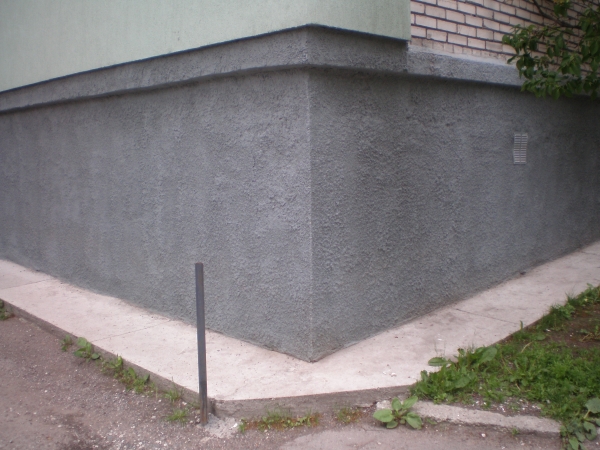
- Inertia. Cement compositions are indifferent to ultraviolet radiation, high moisture, drying and aggressive environments - even systematic exposure to the above factors will not affect the structure of the coating;
Note!
The characteristics of ready-made factory compositions may differ significantly from standard parameters - more accurate information is provided by the manufacturer.
Flaws
- Installation. The plaster is applied by pouring or spreading with a spatula - both methods require certain skills, without which it will be quite difficult to carry out the finishing yourself;
- Thermal insulation. Plaster does not imply insulation of the surface; accordingly, its presence does not in any way affect thermal insulation characteristics base;
- Appearance. If you use a traditional mixture of sand and cement, then after finishing the work the plastered surface will need additional coating. This circumstance may influence decorative mixtures somewhat less;
Facing

Started using it a little later cement plaster- This is one of the first ways to imitate masonry with cut stone.
Layers are used as a material to form a coating of this type natural stone- sandstone, marble and others. Among artificial names, the most popular is porcelain stoneware.
Advantages
- Naturalness. Despite the fact that stone cladding only imitates solid stone masonry, it is the closest technical characteristics imitation. With its help, the maximum degree of solidity and quality is achieved, and not just their visibility, as is the case with other imitations;
- Strength. It is extremely difficult to damage stone cladding - if you do not deliberately set such a goal, then the coating, once formed, will serve you faithfully for an almost unlimited period of time;
- Inertia. Most items are chemically inert and cannot be external influences in the form of ultraviolet radiation, humidity, acid rain, etc.;
Flaws
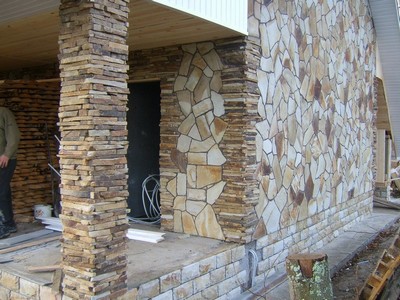
- Price. Without a doubt, it can be called the most expensive technology for cladding a plinth. It costs an order of magnitude higher than all other finishing options. Artificial materials somewhat mitigate this circumstance, but even in this case their cost can hardly be called democratic;
Frame sheathing
The youngest and most high-tech method of finishing the basement of a building is frame sheathing. It consists of a metal frame and facing panels, which are most often made of polyvinyl chloride. Also, the structure of the cladding necessarily includes heat and waterproofing.
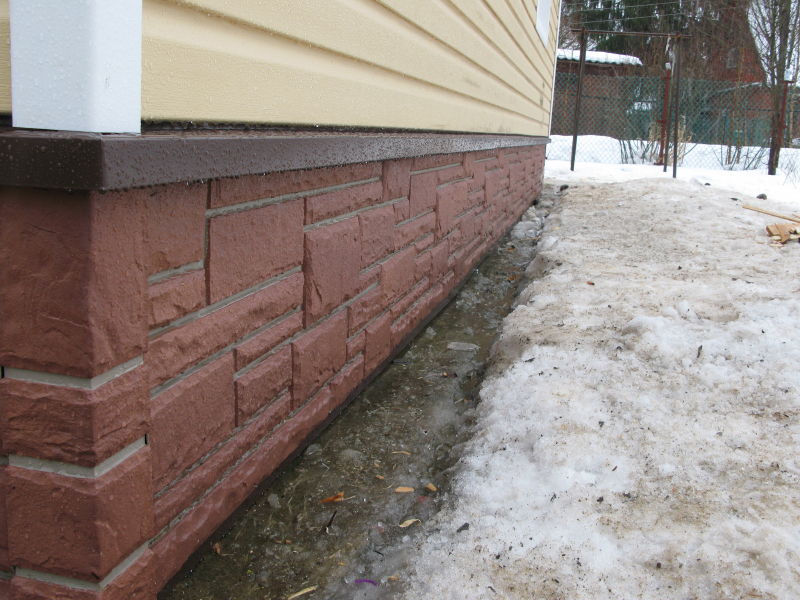
Advantages
- Price. Using frame cladding, an imitation of various natural surfaces is created, which ultimately costs several times less than the original. Using quality materials you will get a good visual effect for a very reasonable amount;
- Protective function. The sheathing structure includes sheet insulation, which creates effective heat and sound insulation. Her presence will protect basement from freezing and extraneous sounds;
- Decorative. PVC panels can be formed and painted quite easily - there are several dozen different textures and colors of these products, which allows you to realize many different design concepts;
- Installation. Despite the fact that the frame cladding is assembled in several stages and is a rather complex process, the availability detailed instructions covers the lack of applied skills. Since most of the elements have a ready-made structure, you will not have any difficulties;
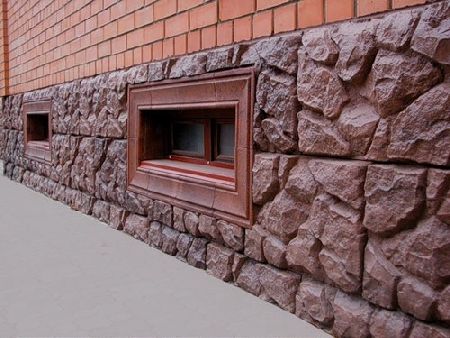
Flaws
- Strength. PVC panels are quite easy to damage - moderate pressure and shock can leave a dent on the surface or even pierce the skin;
- Fragility. Polyvinyl chloride is quite sensitive to ultraviolet radiation, under the influence of which it loses its original color and structure over time;
Note!
This drawback depends entirely on the quality of the panels - some manufacturers provide a 25-year guarantee on their products.
Bottom line
By choosing the right materials for finishing the basement of a brick house, you can achieve the desired result with minimal loss of time and money. More detailed information You can learn more about this topic by watching the video in this article.
Options for finishing the basement of a brick house can be very diverse. The choice of material determines the tightness of the basement and the comfort of living in the building itself. The base of a brick building must be reliably protected from moisture and cold. Even the strongest and most reliable foundation concrete gradually absorbs moisture. Over time, this can lead to the fact that the base of the house begins to gradually collapse and lose its insulating qualities. That is why the finishing of the basement of a brick house must be carried out immediately after the completion of the construction of the building. Moreover, since the base of the house has direct contact with the ground, it needs to be covered first, without waiting for unpleasant consequences. Don't forget about the aesthetic component.
With proper cladding of the basement, you can give the house an individual character, favorably emphasizing the architectural features.
Well-thought-out cladding will make the house stylish and beautiful.
Let's consider what options for finishing the plinth exist in modern construction.
The most simple option finishing the base is the use of solutions facade plaster. Modern Construction Materials have a whole range of positive qualities. Finishing the foundation with plaster allows you to create a durable protective layer with excellent thermal insulation, tightness and vapor permeability. You can finish the base with putty with my own hands, spending a minimum of effort and money on it.
To work you will need the following:
- wide and narrow steel spatula;
- paint brush;
- deep penetration primer;
- facade plaster;
- waterproof paint.
The plastered base of the house can be painted in any color that best suits the style of the yard. If you apply putty in 2 layers using a mounting mesh, then this coating will never crack. However, this option for facing the foundation is not durable. The service life of the putty is no more than 10 years. After this it needs repairs.
Finishing the base with panels
Siding finishing has whole line advantages that must be used during construction. Typically, panels are mounted on steel or wooden frame, which creates additional volume. It is advisable to fill the empty space between the panels and concrete with insulation. For this purpose, polystyrene foam or basalt wool is used.
Decorative siding is made from metal, polyvinyl chloride, cement-based mixtures and composite materials. The front layer of the panels can be imitation stone, natural wood or colored fabric. The resulting surface is sufficiently durable and presentable. appearance. A brick building becomes completely a new style with siding trim.
The sequence of panel cladding is as follows:
- Carrying out markings. For this, a tape measure, level and marker are used. The size of the frame mesh should be adapted to the parameters of the insulation material.
- Drilling holes in concrete. Installing plastic dowels in them. A puncher and a hammer are used.
- Frame assembly. To do this you will need a screwdriver, a hammer, a level and steel profile. It is not advisable to use wood as it has a limited service life.
- Installation of insulation. The most the best option is its gluing to concrete. To increase the reliability of fastening the insulation, we use anchor bolts with wide hats.
- Fastening the panels. This is quite simple to do, since all siding models have a system for fixing parts together.
You can cover the base with panels in just 1 working day. This design is lightweight and does not weigh down the foundation at all.
Cladding the basement level with bricks
Facing the base with brick is great solution, if the building is constructed of similar material. This is how it acquires integrity and solidity. Decorative or red fired brick can be used for work. It is not recommended to use silicate products due to their lack of resistance to moisture and unpresentable appearance.
Clay brick for the plinth itself is an excellent insulating material. It can be attached directly to the foundation or by building a wall next to it to create a ventilation gap.
The gap is filled with insulation or left empty, since air is an excellent heat insulator. The finished structure looks very beautiful and solid. She doesn't need any care or maintenance. But finishing the basement with brick creates an additional load on the building structure. Such a solution should be considered at the design stage.
Since the brickwork cannot simply hang on the plinth, proceed as follows:
- Do for brickwork separate strip foundation in close proximity to what already exists. You can provide a small protrusion on the foundation at the design and pouring stage. This will significantly save time and effort when carrying out finishing work.
- Gluing the brick to the base is carried out using temporary supports made of timber or cement blocks. The supports are removed immediately before installing the blind area. It is made from asphalt or concrete. After hardening, the blind area takes on part of the weight of the brick cladding.
Somewhat easier to work with decorative material. Facing brick has a low weight, which does not have a significant impact on the design. In addition, there is a huge variety of models of this material.
Today you can purchase facing tiles in the form of individual strips or in the form of plinth panels that imitate part of the brickwork. Lightweight materials based on polystyrene or polyurethane foam are used as the basis for facing tiles. It is fixed to the foundation with polymer glue, which creates an excellent protective layer for concrete.
Conclusion on the topic
The modern market is literally overflowing with natural and artificial facing materials.
With their help you can give the building the most sophisticated and original look. The choice is determined by the financial capabilities of the property owner, his tastes, architectural and design features building.
